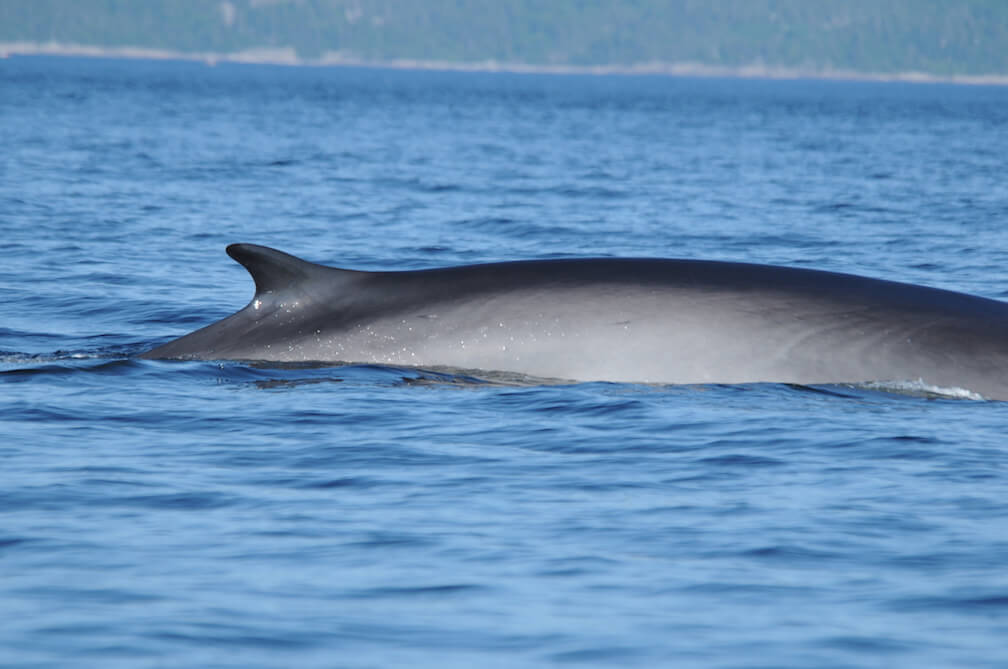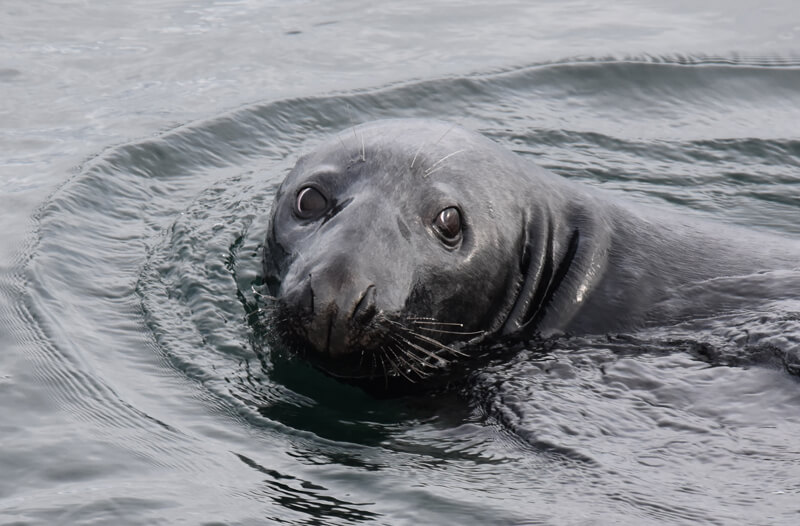July 9: Off the coast of Matane, a humpback whale takes a dive. All eyes focus on its black-and-white tail; it’s Boom Boom River (BBR)!, also known in the Estuary as Gaspar. On the morning of July 11, Gaspar was photographed during a whale-watching cruise in the Saguenay-St. Lawrence Marine Park, not far from Tadoussac. Thus, in less than 48 hours, the whale covered roughly 175 kilometres!
Whales are champion swimmers and, when they get moving, they can travel hundreds of kilometres a day. Swimming speeds vary depending on the species, the individual, and the activity being carried out. Even when resting, whales don’t sit still. In addition to swimming at a good pace, whales also have endurance. So if a whale decides to set out on an adventure, good luck trying to keep up! Imagine, a fin whale can maintain speeds of 37 to 41 km/h, with peaks of 46 km/h.
Let’s talk about Gaspar again. She has joined at least eight other humpback whales in the Marine Park, including Tic Tac Toe and her calf. Several of the humpbacks identified are still juveniles, including Chewbacca. Sexual maturity in this species occurs at around 5 years of age.
At least five fin whales are also plying the waters of the Marine Park, including Bp955 a.k.a. “Ti-Croche”, Bp943 a.k.a. “Piton”, Bp059, a.k.a. “Trou”and at least one calf. Female fin whales reach sexual maturity later than their humpback cousins, i.e. between 6 and 12 years old. After giving birth, a fin whale nurses her young for 6 or 7 months. The calf will then stay with its mother for a few more months to polish its hunting techniques, learn migration routes and acquire many other skills necessary for its day-to-day life.
On July 13 near the Pointe-des-Monts lighthouse, five fin whales make an appearance. Each of them surfaces five times to breath, one after the other, but spaced close enough together that the observer is sure of his tally. Then their backs arch, and the whales disappear into the depths.
Although minke whales have been charming observers in Havre-Saint-Pierre, it is sometimes seals that steal the show. On July 14, a number of tourists tote their folding chairs down to the village docks, drawn by rumours of a show. The performance is that of grey seals, whose two-metre-long bodies punctuate the water surface with movements that are both remarkable and graceful. Their large, elongated snout is reminiscent of that of a horse, though their facial expressions can be somewhat canine-like. The grey seal is also a good swimmer, zipping along at up to 32 km/h. Beware, however. One of its predators, the killer whale, is capable of reaching speeds of up to 55 km/h!







